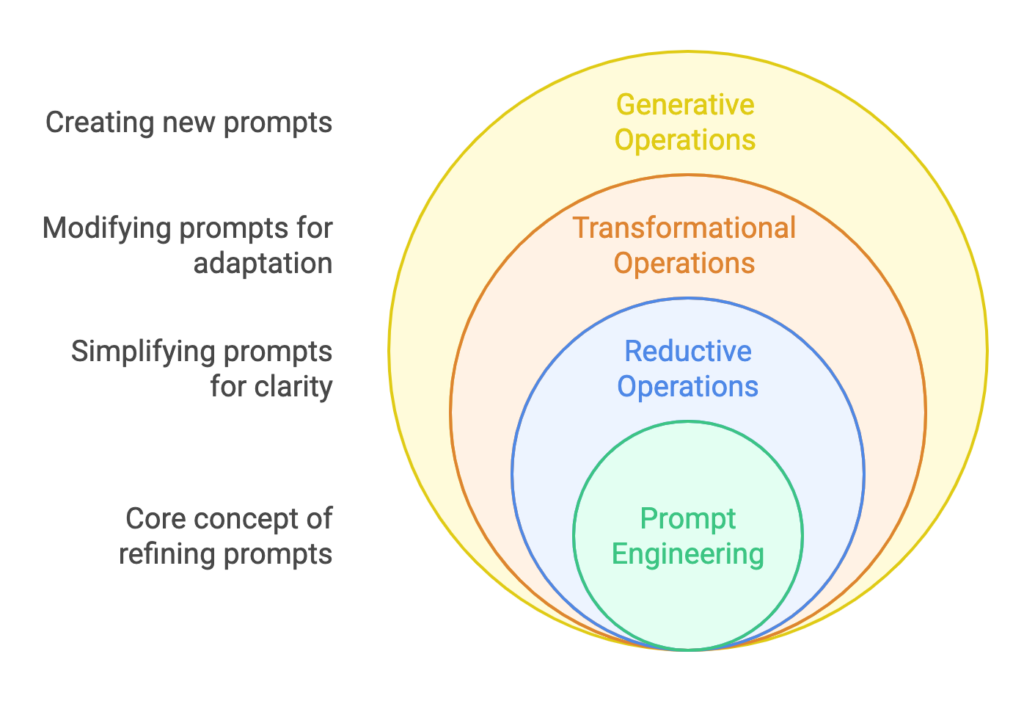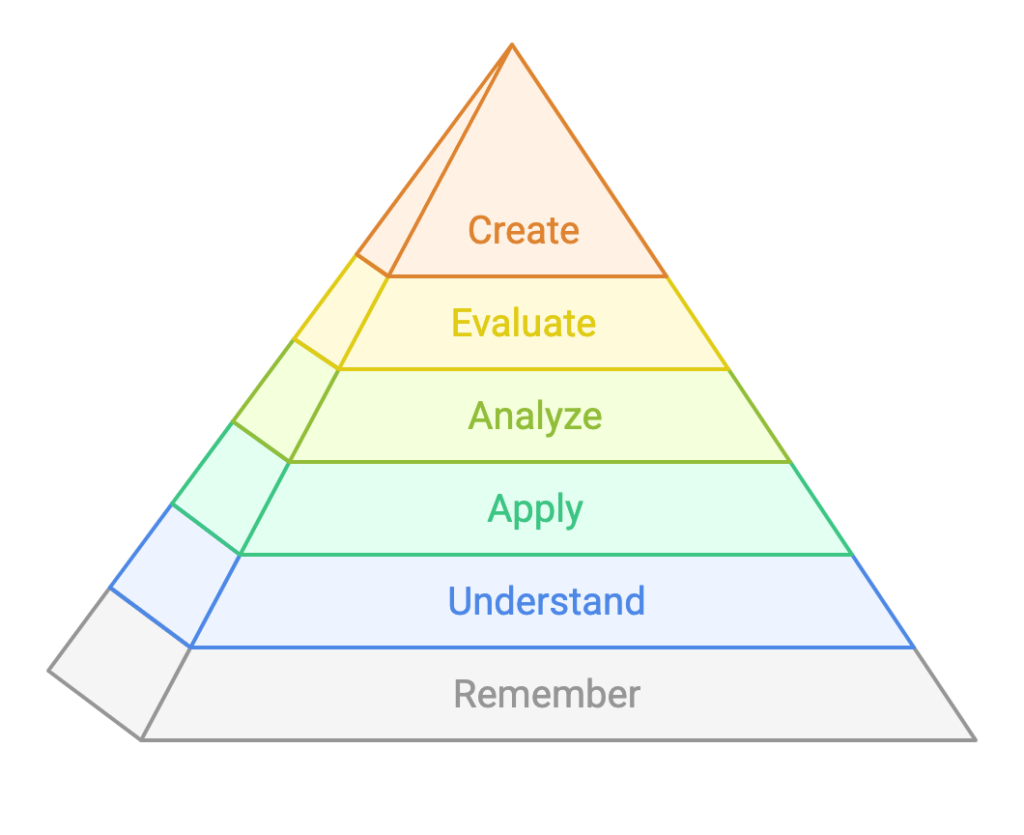Generative AI is revolutionizing industries by enabling tasks ranging from summarization to advanced problem-solving. At the core of these breakthroughs lies prompt engineering, the art of crafting precise instructions to maximize AI’s potential. This blog delves into prompt engineering and AI capabilities, breaking down its three pillars—reductive, transformational, and generative operations—and aligning them with Bloom’s Taxonomy. Whether you’re a developer, educator, or business leader, mastering these principles will help you unleash the true power of AI.
Listen to the audio version, crafted with Gemini 2.0.
Did you know that well-constructed prompts can cut down manual editing time by 30%? Or that businesses leveraging prompt engineering in AI-driven customer support reported a 25% increase in efficiency? These statistics highlight the profound impact of mastering this skill. Imagine a simple, poorly crafted prompt resulting in hours of rework, while a precise one delivers actionable insights in seconds.
In this blog, we’ll explore the foundational principles of prompt engineering, delve into the transformative potential of AI through reductive, transformational, and generative operations, and examine how AI aligns with human learning models like Bloom’s Taxonomy.
The Three Pillars of Prompt Engineering
At the heart of effective AI utilization are three core operations:

1. Reductive Operations
These involve simplifying input data to extract essential insights. Examples include:
- Summarization: Condensing large datasets into concise notes or high-level summaries.
- Extraction: Identifying entities, dates, or numbers from text.
- Characterization: Classifying content into categories like fiction, code, or scientific articles.
- Evaluation: Grading essays, analyzing moral alignment, or critiquing a piece of work.
Tip: Avoid verbosity. Reductive operations thrive on simplicity. A concise, specific input yields clearer results.
Example Prompt:
“Summarize the following research paper into three bullet points focused on its main findings.”
2. Transformational Operations
Transformational tasks maintain the input-output size while optimizing structure or clarity. Key types include:
- Reformatting: Converting text into bullet points, tables, or other formats.
- Refactoring: Rewriting code or text for better readability or performance.
- Language Change: Translating between languages or programming syntax.
- Restructuring: Adjusting the flow of content to improve readability.
- Clarification: Simplifying complex information for better understanding.
Example Prompt:
“Rewrite this Python code snippet in JavaScript while maintaining its logic and functionality.”
3. Generative Operations
Generative operations expand small inputs into larger outputs, focusing on creativity and exploration. Examples include:
- Drafting: Generating stories, legal documents, or technical reports.
- Planning: Creating action plans, project roadmaps, or brainstorming ideas.
- Amplification: Expanding a topic into a detailed, nuanced discussion.
Common Pitfall: Overloading generative prompts with too many instructions. Break them into smaller tasks for better results.
Example Prompt:
“Generate a 500-word blog post on how AI models can enhance productivity in remote work environments.”
AI Through the Lens of Bloom’s Taxonomy
Bloom’s Taxonomy—a widely used educational framework—maps perfectly onto the capabilities of AI models. Let’s align AI operations to its six levels of learning:
- Remember: AI recalls facts and concepts, enabling quick access to stored knowledge.
- Understand: Language models explain ideas and connect concepts seamlessly.
- Apply: AI applies knowledge in novel contexts, such as solving programming problems.
- Analyze: Models draw connections, identify patterns, and conduct in-depth analysis.
- Evaluate: With proper guidance, AI justifies decisions and critiques content effectively.
- Create: AI generates original outputs, from stories to technical blueprints, showcasing unparalleled creativity.

By understanding these stages, developers and educators can craft prompts that align with specific learning or productivity goals.
Emergent AI Capabilities: Unveiling Hidden Potential
As AI models grow, they unlock emergent capabilities—new skills not explicitly programmed. Examples include:
- Theory of Mind: AI can infer user intent. For instance, tailoring customer service responses based on chat tone.
- Logical Reasoning: Models deduce conclusions based on patterns, such as identifying the shortest shipping route given constraints.
- In-Context Learning: AI temporarily “learns” from examples provided in a session, such as adapting to a user’s writing style.
Tip: Use specific prompts to activate emergent capabilities. For example: “Analyze this email for tone and intent, then suggest three alternative replies.”
Best Practices for Effective Prompt Engineering
- Be Specific: Clear, detailed prompts minimize ambiguity.
- Bad: “Write about AI.”
- Good: “Draft a 300-word blog post on how AI improves customer service in retail.”
- Iterate and Refine: Test prompts and tweak them based on outputs.
- Break Down Complex Tasks: Use multi-step prompts for better results.
- Ground Creativity: Verify outputs with external resources or tools.
- Use Templates:
| Task | Prompt Example |
|---|---|
| Summarization | “Summarize the following text in three points.” |
| Code Translation | “Convert this Python code into JavaScript.” |
| Tone Adjustment | “Rewrite this email to sound more formal.” |
Getting Started: A Beginner’s Guide to Prompt Engineering
Follow these steps to master prompt engineering:
- Define Your Goal: Be clear about the desired output.
- Start Simple: Use straightforward language and instructions.
- Iterate: Refine your prompt based on initial outputs.
- Validate Outputs: Cross-check results for accuracy and relevance.
- Experiment with Tools: Platforms like OpenAI Playground and HuggingFace are great starting points.
Conclusion
Generative AI isn’t just a tool—it’s a collaborator capable of amplifying creativity, logic, and efficiency. By mastering prompt engineering, understanding Bloom’s Taxonomy, and leveraging emergent AI capabilities, you can unlock new levels of productivity and innovation.
The future of learning, problem-solving, and creativity is here. How will you harness it?
References
- Understanding Latent Spaces in Language Models
- Emergent Abilities of Large Language Models
- Bloom’s Taxonomy and Educational Framework
- OpenAI Playground
- HuggingFace for Llama Models





Leave a Reply